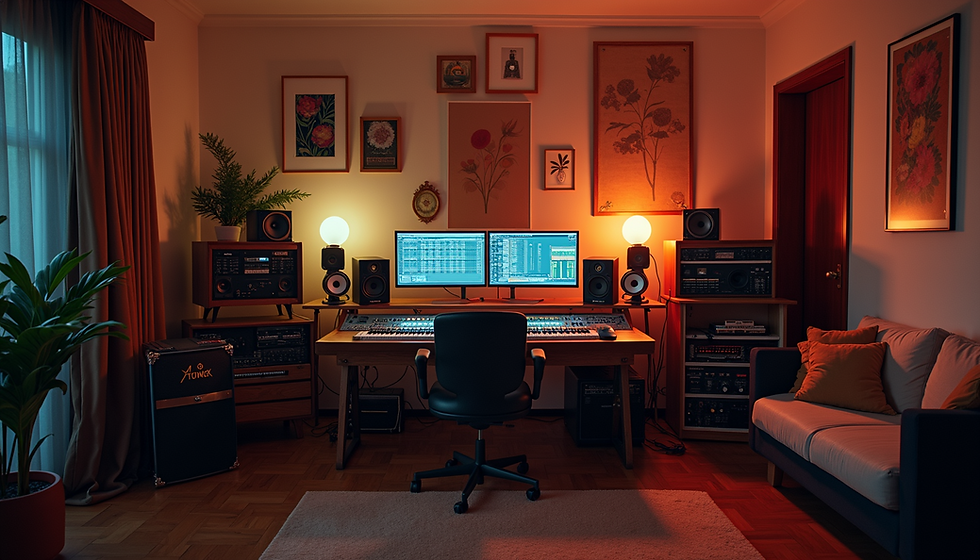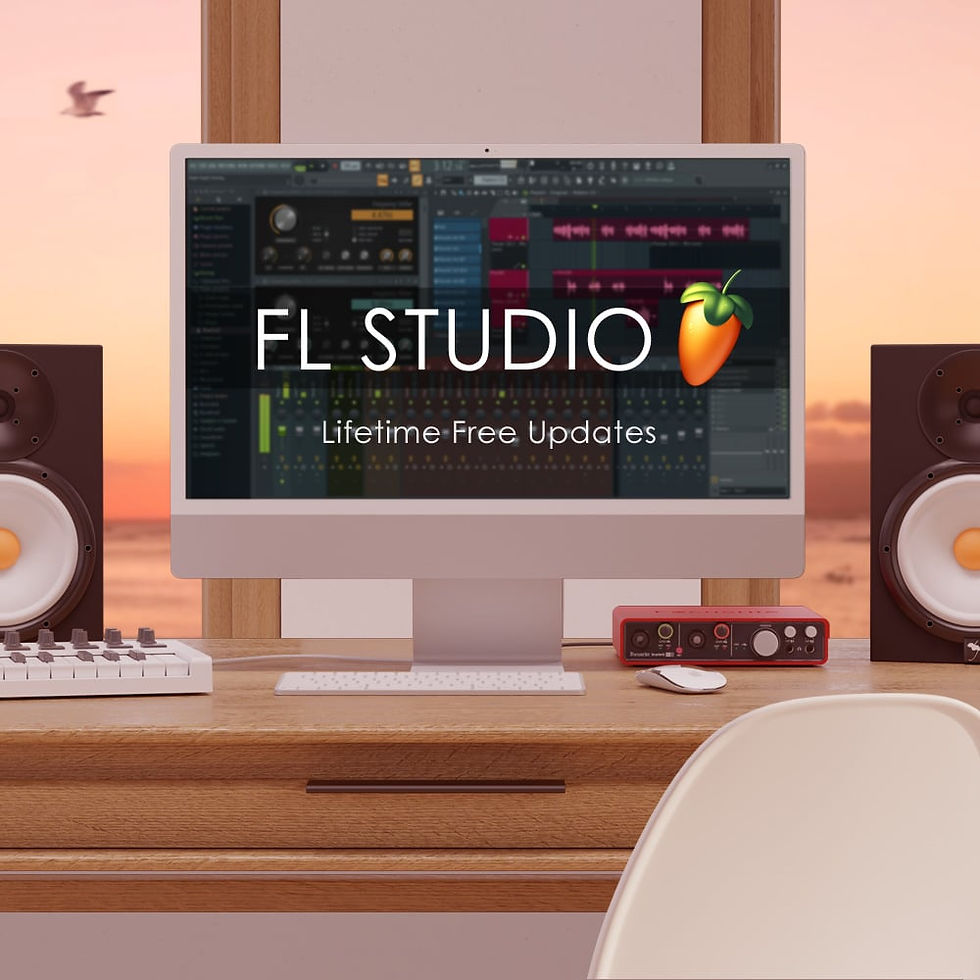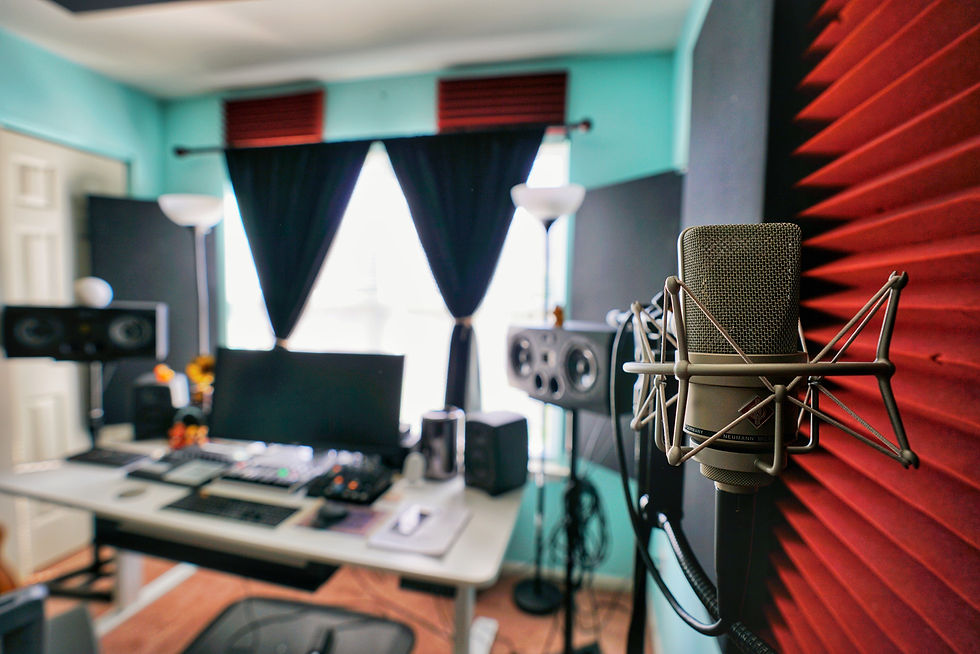Affordable Budget Home Studio Setup for Aspiring Indian Musicians
- May 16
- 6 min read
Setting up a home studio on a budget is entirely possible, and it doesn't need to hurt your wallet. For aspiring musicians, a dedicated space for creating and recording music can transform your artistic journey. It offers you the freedom to explore your sound and improve your skills. This post will guide you through practical steps to build your own budget-friendly home studio. Whether you’re a singer-songwriter, producer, or part of a full band, you can create a functional and inspiring setup that fits within your budget.

Why You Need a Home Studio
A home studio is essential for any musician looking to create without the constraints of commercial studios. It gives you the flexibility to record whenever inspiration strikes, experiment with different styles, and produce music that aligns with your vision. Moreover, advancements in technology mean that high-quality home recordings are within reach. This is a golden age for music production where aspiring artists can make their mark from the comfort of their homes.
Key Components of a Budget Home Studio
To create an effective home studio, focus on several essential components. Let’s explore these in detail:
1. Computer and Software
Your computer is the backbone of your home studio. If you are considering a dedicated setup, invest in a reliable machine capable of running digital audio workstation (DAW) software smoothly. Many musicians can use existing computers, but check the specifications to ensure they meet the software requirements.
We would recommend the following configurations for a music production computer:
💻 1. Windows‑Based Build (~₹40,000–₹50,000)
Component | Recommendation | Approx. Cost |
CPU | AMD Ryzen 5 5600GT (6 cores, 12 threads, integrated graphics) | ₹12,000 |
Motherboard | B450 or B550 chipset (e.g. MSI B450M PRO‑VDH Max) | ₹6,000 |
RAM | 16 GB DDR4‑3200 MHz (2×8 GB kit, e.g. Corsair Vengeance LPX) | ₹4,000 |
Storage (OS/DAW) | 500 GB NVMe SSD (e.g. Western Digital SN550) | ₹3,500 |
Storage (Samples) | 1 TB SATA HDD (for libraries and backups) | ₹3,000 |
Power Supply | 450 W 80+ Bronze (e.g. Antec Earthwatts) | ₹2,500 |
Case | Budget mid‑tower with good airflow (e.g. Ant Esports ICE‑311M) | ₹3,000 |
Cooling | Stock CPU cooler (included) | ₹0 |
Optional GPU | Skip if only using DAW (integrated graphics suffice) | — |
Total | ≈ ₹34,500 |
Why this works: The Ryzen 5 5600GT’s six cores and 12 threads handle multi‑track recording and plugin chains, while integrated graphics let you save on a discrete GPU. Fast NVMe storage speeds up project load times, and 16 GB RAM is the sweet spot for mid‑size sessions.
🍎 2. Apple Mac Mini M2 (~₹60,000)
Apple M2 chip (8‑core CPU, 10‑core GPU)
16 GB Unified Memory
512 GB SSD
Why this works: The Mac Mini M2 delivers exceptional single‑thread and multi‑thread performance in a compact form factor. Its unified memory architecture speeds up sample‑heavy projects, and the SSD ensures snappy load times. If your budget allows, it’s an all‑in‑one solution with macOS‑optimized DAWs like Logic Pro.
For your DAW, numerous free and low-cost options are available, including:
Audacity: A free, open-source audio editor perfect for beginners.
GarageBand: A user-friendly option free for Mac users, ideal for recording and mixing.
Cakewalk by BandLab: A powerful free DAW for Windows that offers many professional features.
FL Studio: An advanced but paid DAW for professionals who have some budget. (Recommended)
Logic Pro: For macOS users, it's one of the most recommended DAWs that has been used in the industry for long time. (Recommended)
These DAWs can provide an excellent starting point with little to no cost.

2. Audio Interface
An audio interface connects your instruments and microphones to your computer, vital for recording high-quality sound. Fortunately, you do not need to invest heavily here. Look for the best audio interface under ₹10,000 with features like multiple input/output options, MIDI connectivity, and low latency. Models such as the Focusrite Scarlett Solo are popular for their affordability and reliability.

3. Microphones
The right microphone is crucial for capturing vocals and instruments. Opt for an affordable condenser mic that will deliver clarity and warmth. The Audio-Technica AT2020 and MXL 770 are two excellent choices that cost around ₹8,000 to ₹10,000 but offer professional-quality sound without emptying your wallet.

4. Studio Monitors and Headphones
Good sound monitoring is key in music production. Invest in studio monitors for accurate sound reproduction. Alternatively, if space is limited, high-quality studio headphones can also suffice. Look for models with a flat frequency response to get an authentic representation of your mix.
Our recommendations:
Studio Monitors
PreSonus Eris E3.5
Mackie CR-X Series CR3-X
Headphones
beyerdynamic DT 770 Pro 80
Audio‑Technica ATH‑M40x

5. MIDI Controller
For those focused on electronic music, a MIDI controller is a valuable tool. It allows you to play virtual instruments and manage software functions easily. Many compact, budget-friendly models are perfect for beginners and help bridge the gap between your musical ideas and the digital realm.
Our recommendation:
Novation Launchkey Mini MK3
Arturia MiniLab 3
Akai MPK Mini MK3

6. Acoustic Treatment
Sound quality can greatly improve with proper acoustics. While a soundproof room is ideal, you can create effective DIY acoustic treatment using common household items. Foam, carpets, and heavy curtains can be used to absorb sound reflections and echoes without costing much.

7. Cables and Accessories
Don't overlook the importance of cables, stands, and other accessories. Investing in good-quality XLR and instrument cables ensures better sound quality. Prioritize durability as they need to withstand frequent use. Consider getting about 3-4 cables for flexibility during recording.
8. Music Production Plugins
Once your basic gear is set up, expand your creative options with music production plugins. Many developers offer affordable or free plugins to enhance your tracks. Look for essential tools like equalizers, compressors, and reverb to enrich your sound. Utilizing these features can significantly elevate your music production without the need for a commercial mixing engineer.
Tips for DIY Home Recording Techniques
Now that your home studio is ready, it’s time to optimize its use. Here are some practical home vocal recording techniques to achieve clear and professional recordings:
1. Choose the Right Space
Choose a quiet room that will serve well for recording. Rooms with soft furnishings help absorb sound naturally. An unused closet can double as a vocal booth, limiting unwanted noise and reverberation.
2. Position Your Microphone Correctly
Microphone placement is key. Aim for a position about 6-12 inches from your mouth. Using a pop filter can help reduce plosive sounds during vocal recordings. Test different placements until you achieve the desired sound clarity.
3. Experiment with Recording Levels
Monitor your recording levels closely. The goal is to keep levels consistent without peaking into the red zone. It's good practice to leave some headroom to avoid distortion. This keeps your options open for mixing and mastering later.
4. Utilize Backing Tracks Wisely
If layering vocals or instruments, use pre-recorded backing tracks for guidance. This tactic helps maintain consistency in timing and pitch, especially for vocal performances.
5. Review and Re-Record
Regularly review your recordings. Music production is a process of refinement, and re-recording parts can lead to the best results. Do not hesitate to try multiple takes for guitar riffs or vocal lines to capture the perfect sound.
Finishing Touches: Mixing and Mastering
After recording comes the mixing and mastering phase. While professional mixing services can be expensive, affordable options exist online. Consider platforms where you can hire session musicians or access affordable mixing and mastering services. These resources can give your tracks a polished sound, allowing you to connect even more with your audience.
Exploring Additional Resources
Building a budget home studio might feel daunting, but plenty of resources are available to support you. Websites like YouTube and music forums provide advice on equipment setup and recording techniques. Audio production blogs often offer step-by-step guides that can aid in your home studio journey.
Your Journey Awaits
Creating a budget home studio is completely achievable with thoughtful planning and focus on essential components such as your computer, audio interface, and microphone. The most important factor is your passion for music and creativity. Armed with this knowledge and practical tips, you are ready to start building, experimenting, and recording your unique sound.
Happy creating!
Get your songs completed! Avail online music services from handpicked, verified and affordable yet professional Indian Musicians and Artists: Book Now
Checkout the best songs delivered online on S.Rocks.Music: Listen Now









Comments